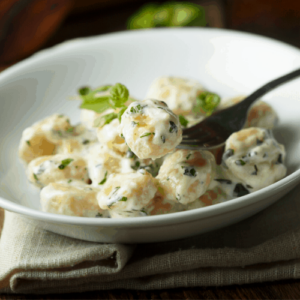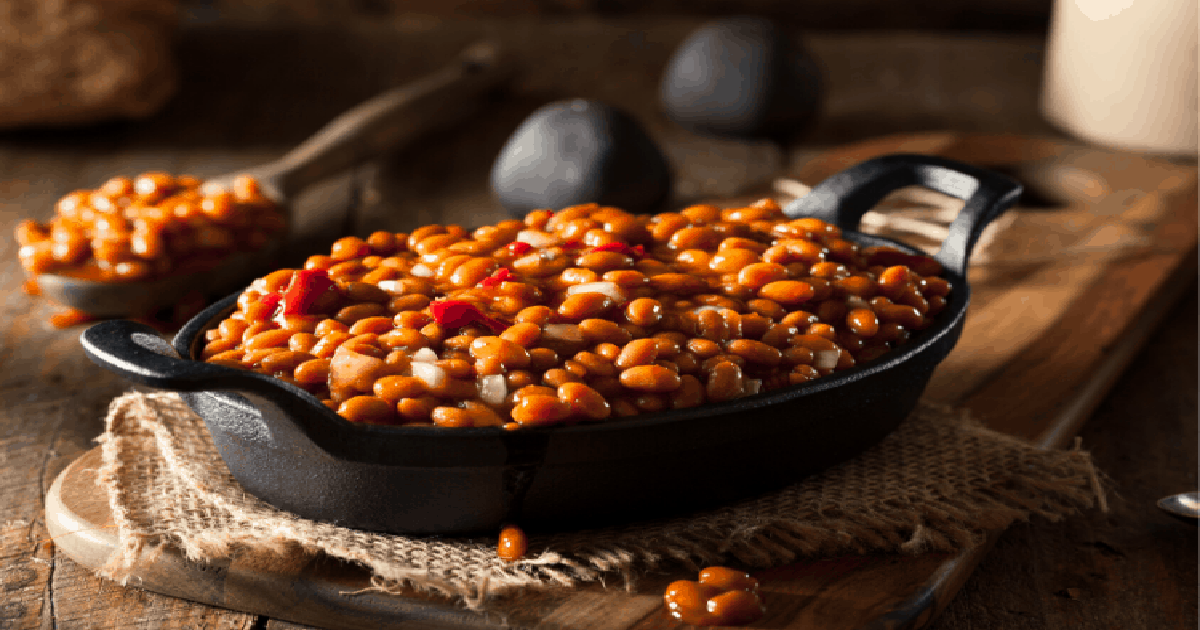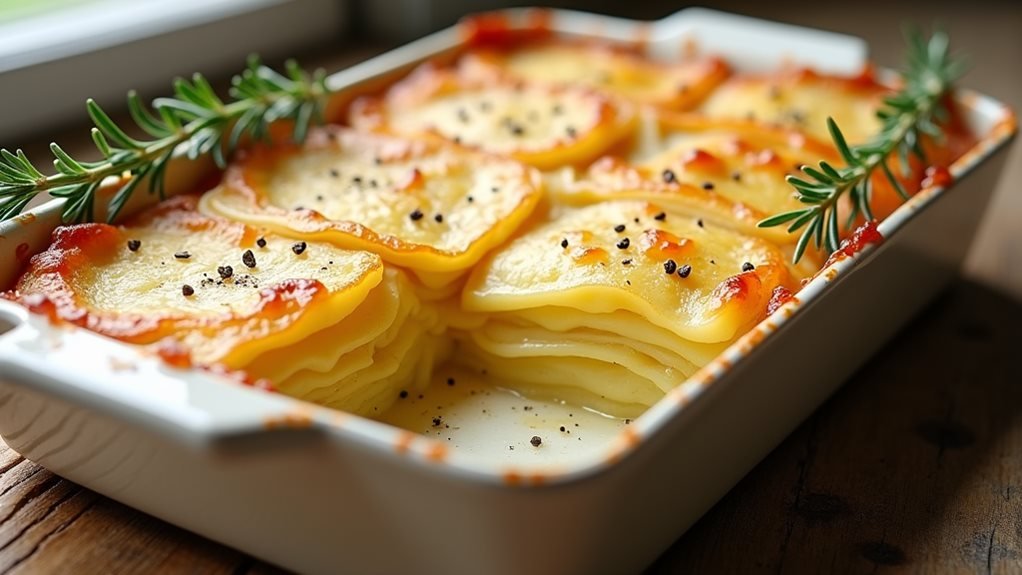Gnocchi, the quintessential Italian dumpling, is renowned for its delightful pillowy texture and versatility with sauces. Embracing the homemade gnocchi recipe enables a culinary journey filled with the authentic taste of Italy. This guide provides an array of gnocchi variants, artful tips for crafting the perfect dumpling, and a simple yet delectable gnocchi recipe.
Gnocchi comes in many forms, offering a unique flavor and texture profile. Here is an insight into traditional and modern takes on this classic dish.

Ricotta Gnocchi Recipe
Ingredients
Ingredients
- 2 large floury potatoes
- 50 g ricotta cheese
- 90 g plain flour
- 1 free-range egg, beaten
- 1 thyme sprig leaves only
- Sea salt and freshly ground white pepper
- Grated Parmesan cheese to serve
For the Sauce:
- Olive oil for frying
- Freshly ground black pepper
- 150 g peas, podded if fresh, defrosted if frozen
- Butter
- 1 thyme sprig leaves only
- Zest of 1 lemon
Instructions
Instructions
- Preheat the oven to 200°C/Gas 6. Bake the potatoes in their skins for 1–1¼ hours until tender the whole way through.
- Remove the flesh from the skins (ideally while still warm) and mash until smooth – a potato ricer works best here. Mix a pinch of salt, white pepper, and flour in the ricotta. Make a well in the middle, add the beaten egg, and combine the mixture with floured hands. Work in the thyme leaves and continue until a smooth dough has formed.
- Cut the dough in half and shape each piece into a long cigar shape about 1.5cm thick. Using the back of a floured table knife, cut each length of dough into 2cm pieces to make ‘pillows’ or individual gnocchi. Gently press each one in the center using your floured finger.
- Bring a large pan of water to the boil. Add the gnocchi, tilting the pan from side to side briefly to stop them sticking together, then simmer for about 1½–2 minutes until they start to float. Drain the gnocchi and leave them to steam-dry for 1–2 minutes. The dent will hold more sauce and allow the gnocchi to take on more flavor.
- While the gnocchi is cooking, heat a frying pan over medium-high heat and add a little olive oil. Add the cooked gnocchi to the hot pan with a pinch of salt and black pepper, and sauté for 1–2 minutes on each side until nicely colored.
- Add the peas to the pan with a knob of butter and the thyme leaves. Toss to heat through, then add the lemon zest.
- To make the cream sauce, heat another frying pan over medium heat and melt a knob of butter. Add a little salt and black pepper, then add the cream and cook for 1-2 minutes, stirring constantly.
- On the serving plates, lay the cooked gnocchi and pour the cream sauce over the gnocchi. Top with the grated Parmesan cheese. Serve immediately.
Video
Notes
Which gnocchi is better: potato or ricotta?
Whether gnocchi is better than potato or ricotta is subjective and depends on personal preference. Potato gnocchi is the classic type, with a dense and hearty texture that holds up well to robust sauces. Ricotta gnocchi, on the other hand, is typically lighter and more delicate, with a creamy and soft texture.
Potato gnocchi has the earthy flavor of potatoes and is a bit more challenging to make. The cook must carefully balance the moisture level to avoid gumminess. Ricotta gnocchi is generally easier to prepare and can be more forgiving for beginners. Due to the cheese, they have a richer flavor and can be enjoyed with lighter sauces to complement their delicate nature.
Ultimately, the “better” gnocchi depends on what you look for in a dish: the comforting, traditional potato gnocchi or the lighter, fluffy texture of ricotta gnocchi.
What is ricotta gnocchi made of?
Ricotta gnocchi is made of the following main ingredients:
- Ricotta cheese: The primary ingredient, providing moisture and a creamy texture.
- Flour: This ingredient binds the ingredients and provides structure to the gnocchi. The amount may vary to achieve the desired consistency.
- Egg: Often included to help bind the ingredients together and add richness.
- Salt: For seasoning.
- Parmesan cheese: Sometimes added for extra flavor.
- Nutmeg: A pinch can be included to give a hint of warmth and depth.
Some recipes might also include herbs or other seasonings to enhance the flavor profile of the gnocchi.
Why are my ricotta gnocchi mushy?
Ricotta gnocchi can become mushy for several reasons:
- Excess moisture in the ricotta: If the ricotta cheese is too wet, it can make the dough too sticky and soft, resulting in mushy gnocchi. To prevent this, drain the ricotta in a fine-mesh sieve or cheesecloth to remove extra moisture before using it.
- Overworked dough: Kneading the dough too much can develop the gluten in the flour, leading to a dense and mushy texture. It’s important to mix the dough just until it comes together.
- Too much flour: While it might seem counterintuitive, adding too much flour to compensate for the wetness of the dough can result in heavy and mushy gnocchi since they become too dense.
- Water not boiling: Ensure your water is salted and at a rolling boil before adding the gnocchi. If necessary, cook in batches to prevent the gnocchi from becoming mushy and avoid dropping the water’s temperature.
Finding the right balance between these factors is essential to achieve the perfect texture.
What are the 3 types of gnocchi?
The three main types of gnocchi are:
- Potato Gnocchi is the most traditional type. It is made with mashed potatoes, flour, and sometimes eggs. These are firm and can withstand a variety of sauces.
- Ricotta Gnocchi is made with ricotta cheese, flour, and sometimes eggs, resulting in a lighter, softer gnocchi.
- Semolina Gnocchi (Gnocchi alla Romana) is made with semolina flour, milk, cheese, and butter. They are baked in the oven and have a firm yet tender texture, quite different from the boiled potato and ricotta varieties.
- Gnocchi alla zucca Pumpkin gnocchi served with butter and cheese.
- Ndunderi The Amalfi Coast specialty was originally made with farro and curdled milk.
These are the basic types, but variations within each category might include different flours and additional ingredients, such as herbs, spinach, or sweet versions.
Summing Up
In the warm embrace of your kitchen, where the blend of tradition and personal touch becomes the essence of cooking, the simple alchemy of flour, ricotta, and a touch of seasoning takes form in a dish as comforting as it is sophisticated. Embrace the recipe laid out before you, rely on the intuition that governs any great home cook’s hands, and let the transformation from simple ingredients to ethereal gnocchi be a reminder that culinary excellence isn’t solely the empire of starched tablecloths and silver service, but often right there, in the heart of your home, one humble yet sublime dumpling at a time.
Whether cloaked in sage butter or a robust tomato sauce, let the perfect bite of handmade Gordon Ramsay’s ricotta gnocchi serve not just as a testament to the skills acquired and the guide followed but also as an invitation to continue exploring the boundless potential that even the most elemental of ingredients holds.








